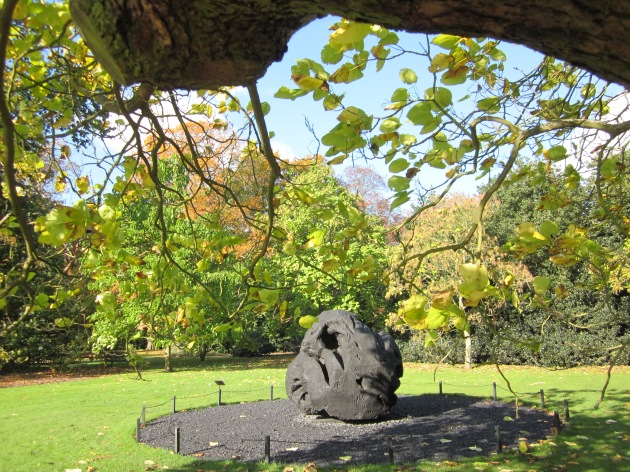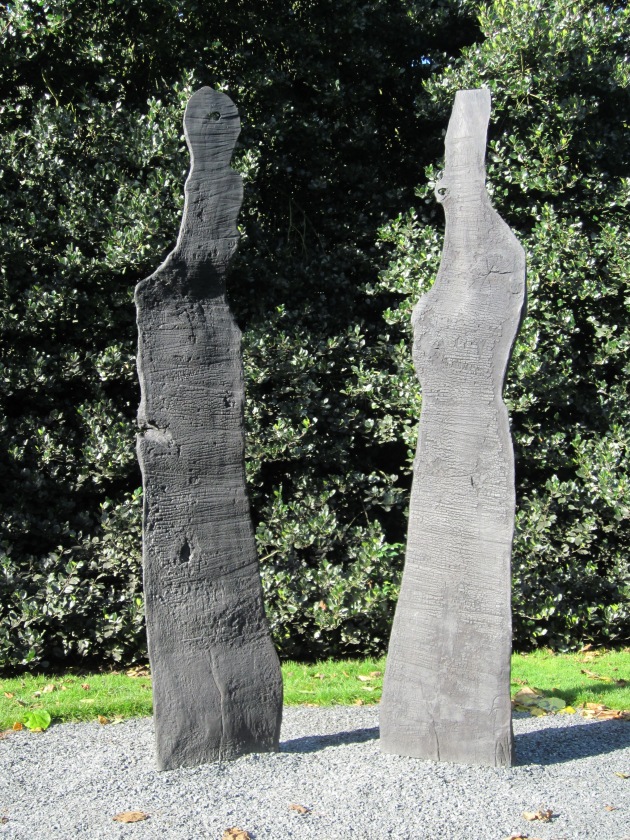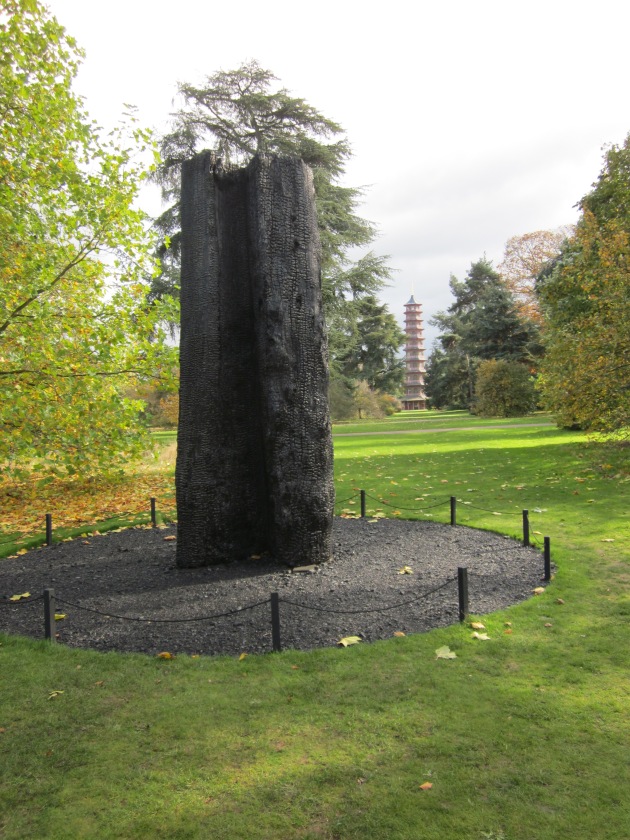I’m a peaceable sort of chap, but occasionally my musical hackles are raised. Today, they’re up again, occasioned by the arrival in the post of Anne Applebaum’s just-published tome Iron Curtain. The Crushing of Eastern Europe 1944-1956 (Allen Lane). Anyone who knows me also knows that I’ve spent a good few years of my life exploring Polish music in this very period. So for me to head straight for chapters such as ‘Homo sovieticus‘, ‘Socialist realism’, ‘Ideal cities’, ‘Reluctant collaborators’ and ‘Passive opponents’ is a totally predictable action, one undertaken I’m afraid more in hope than expectation.
 The plain fact is that most historians seem not to like music. Or, rather, they avoid writing about it if they possibly can. Literature and the visual arts – fine, although even they are often poorly attached appendages. Is it therefore a case of such historians believing that music has no place in social, political or cultural history? Or is it that they have no analytical or descriptive vocabulary with which to discuss it? There have been occasional exceptions that bridge this gaping hole, one of them being in the writings of Norman Davies. Davies not only makes the effort but also understands cultural contexts and has the writing skills to convey the significance of music and the other arts to his readers. Another exception is the historian Toby Thacker, whose Music after Hitler, 1945-1955 (Ashgate, 2007) is a searching enquiry that covers both East and West Germany. (Applebaum does quote from a 2002 article by Thacker, but his book is not in her bibliography.) There are also historians whose brief is cultural history, such as Frances Stonor Saunders and her perspective from outside the Soviet bloc in Who Paid the Piper? The CIA and the Cultural Cold War (Granta, 1999).
The plain fact is that most historians seem not to like music. Or, rather, they avoid writing about it if they possibly can. Literature and the visual arts – fine, although even they are often poorly attached appendages. Is it therefore a case of such historians believing that music has no place in social, political or cultural history? Or is it that they have no analytical or descriptive vocabulary with which to discuss it? There have been occasional exceptions that bridge this gaping hole, one of them being in the writings of Norman Davies. Davies not only makes the effort but also understands cultural contexts and has the writing skills to convey the significance of music and the other arts to his readers. Another exception is the historian Toby Thacker, whose Music after Hitler, 1945-1955 (Ashgate, 2007) is a searching enquiry that covers both East and West Germany. (Applebaum does quote from a 2002 article by Thacker, but his book is not in her bibliography.) There are also historians whose brief is cultural history, such as Frances Stonor Saunders and her perspective from outside the Soviet bloc in Who Paid the Piper? The CIA and the Cultural Cold War (Granta, 1999).
I have been poring over Applebaum’s book this morning. It’s a weighty volume, focusing on three countries: East Germany, Hungary and Poland. In major respects, it promises to be a fascinating read, a work of breadth and synthesis which I hope will help me in placing Polish music of the post-war decade within a wider context. In fact, Iron Curtain barely acknowledges that there was such a thing as music, let alone its crucial role in socialist-realist propaganda. And propaganda, not least that involving music and the visual arts, was at the heart of the ‘crushing’ communist machine.
There is mention of the prohibition of jazz and dance music as part of early 50s rebellious youth culture in Poland; elsewhere there is a quotation of the text of an East German mass song. As for the music intended to promote socialist realism through mass songs or cantatas – or the concert music of the period – there’s almost nothing, except an incomplete recollection of one incident from Andrzej Panufnik, which Applebaum misleadingly glosses. Chopin Year (1949) is discussed, but not the two Festivals of Polish Music (1951, 1955). Władysław Szpilman gets a mention for his radio broadcasts at the start and end of World War II, but then casually to remark that he ‘continued to work for the radio until 1963’ totally ignores his principal role in writing mass songs – some of them extremely popular – in the 1950s. Applebaum has a few easily-reached quotes from Panufnik’s autobiography Composing Myself (Methuen, 1987), but these hardly count as a measured response to the issue. The gaps are yawning.
I have not yet read Iron Curtain through from start to finish, so it is possible that its focus does not require the sort of essential details whose omission is so glaring to me. Its attention to literature and film, for example, is a little greater, but any book on the period that fails to engage with Czesław Miłosz’s The Captive Mind (1953) – although it is in the bibliography – or a literary figure like Konstanty Ildefons Gałczyński, who was forced into ‘internal exile’ in the early 1950s for not fitting in with Poland’s socialist-realist drive, cannot fail to raise serious questions. The visual arts are as notable for their absence as is music (a couple of illustrations do not make up for the dearth of discussion of painting, sculpture and poster art). The general level of interest is summed up by a sentence towards the end of the chapter on ‘Socialist realism’:
In due course, the most obviously Stalinist films became embarrassments to their directors, some of whom denounced or disavowed them after his death in 1953. The crudest High Stalinist paintings, sculpture, poetry, fiction and architecture met the same fate.
Why is music excluded there?
Readers who are curious in any way about the role of music in history are normally compelled to look elsewhere for enlightenment, to the work of music historians. There are several recent books, by dedicated writers on music, which engage meaningfully with the cultural, historical and political contexts of post-war Eastern Europe. (None of these authors is referenced by Applebaum, and it looks as if no music historians were consulted. I can’t tell if specialist historians in the other arts were consulted.) But no-one can pretend that any of these music-oriented books reaches the ‘broad masses’ who might pick up history books like this one. There is something deeply wrong about this state of affairs. Why is there so little reciprocity on the part of historians? Do they not recognise what they – and consequently the reader – are missing?
Don’t get me wrong: Applebaum’s book looks as if it will, in other respects, be an engaging read, not least for its interviews with ‘time witnesses’. And I promise to read it for what it aims to be, despite my disappointment at the failure of yet another historian to incorporate musical and other cultural aspects closer to the centre of the argument.
























 The plain fact is that most historians seem not to like music. Or, rather, they avoid writing about it if they possibly can. Literature and the visual arts – fine, although even they are often poorly attached appendages. Is it therefore a case of such historians believing that music has no place in social, political or cultural history? Or is it that they have no analytical or descriptive vocabulary with which to discuss it? There have been occasional exceptions that bridge this gaping hole, one of them being in the writings of Norman Davies. Davies not only makes the effort but also understands cultural contexts and has the writing skills to convey the significance of music and the other arts to his readers. Another exception is the historian Toby Thacker, whose Music after Hitler, 1945-1955 (Ashgate, 2007) is a searching enquiry that covers both East and West Germany. (Applebaum does quote from a 2002 article by Thacker, but his book is not in her bibliography.) There are also historians whose brief is cultural history, such as Frances Stonor Saunders and her perspective from outside the Soviet bloc in Who Paid the Piper? The CIA and the Cultural Cold War (Granta, 1999).
The plain fact is that most historians seem not to like music. Or, rather, they avoid writing about it if they possibly can. Literature and the visual arts – fine, although even they are often poorly attached appendages. Is it therefore a case of such historians believing that music has no place in social, political or cultural history? Or is it that they have no analytical or descriptive vocabulary with which to discuss it? There have been occasional exceptions that bridge this gaping hole, one of them being in the writings of Norman Davies. Davies not only makes the effort but also understands cultural contexts and has the writing skills to convey the significance of music and the other arts to his readers. Another exception is the historian Toby Thacker, whose Music after Hitler, 1945-1955 (Ashgate, 2007) is a searching enquiry that covers both East and West Germany. (Applebaum does quote from a 2002 article by Thacker, but his book is not in her bibliography.) There are also historians whose brief is cultural history, such as Frances Stonor Saunders and her perspective from outside the Soviet bloc in Who Paid the Piper? The CIA and the Cultural Cold War (Granta, 1999).

























